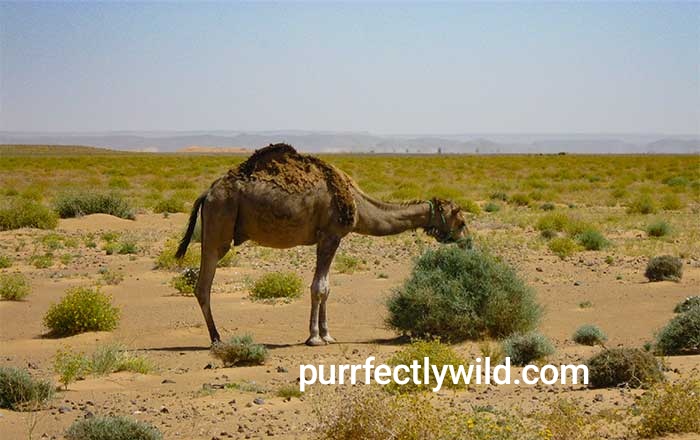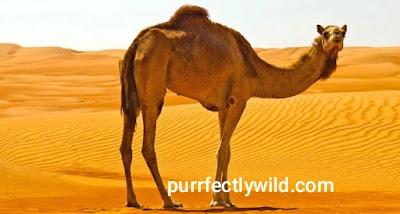The Physiology of Camels: Adaptations for Water Conservation
As humans move into harsher environments, their ability to adapt to that environment becomes increasingly necessary for survival. Similarly, animals have adapted physiologically and behaviorally to cope with such drastic habitat changes. Since the beginning of evolution, camels have been highly adapted to sweltering and dry conditions; enabling them to survive and thrive in this harsh environment has contributed significantly to their emergence as creatures, a vital living specimen, which could provide essential insights into future developments in gulag and hibernation research. Camels are known as ‘Desert Ships’ and have unique physiological and anatomical features, many of which are poorly understood, helping them cope with the world’s most challenging conditions.
Background on Camels
All organisms have easily understood basic needs, including water, food, and a suitable temperature environment to function correctly. However, the environment almost entirely controls such factors when considering camels. Water availability is particularly crucial in their habitat selection since the deserts they occupy do generally not support animal life as other regions do. Camels are known to survive days or even weeks without drinking water, with some estimates suggesting a survival period of up to two weeks based on outside temperature and activity levels. On the other hand, food consumption is not a problem in such barren lands since they are naturally predisposed to ingesting largely dry and saline plant materials, which are well outside the tolerance levels of most herbivores. On a somewhat physical level, high daily temperature fluctuations (ΔT) and periodic sweltering conditions are two of the most significant factors that predominantly shape the climate in which camels thrive. At night, the temperature can drop perilously low, with minimal readings of -9°C recorded in Australia’s Great Sandy Desert correlating to fierce frost. Meanwhile, at noon, the extreme air temperature can surpass 58°C, while the ground temperature can shoot up to 80°C in summery months, making these the hottest places on land and among the hottest in the world.

Cultural significance of Camles
Camels are one of the few animals with which humans have developed a special bond of dependence and connection. In many parts of the Middle East, North Africa, and Central Asia, traditional lifestyles would not have been possible without the camel. These animals have been central to the development of entire cultures, especially in regions like the Arabian Peninsula, where the Bedouin people relied heavily on camels. For the Bedouin, camel products such as milk, meat, and hair were essential for survival, providing food, clothing, and shelter. Camels were also valuable as pack animals and mounts, allowing the Bedouin to travel deep into the desert. The mobility camels provided shaped the Bedouin’s independent way of life and strong sense of self-reliance. In Bedouin poetry, known as “qaṣīdah,” the female camel (“nāqah”) was often celebrated for its loyalty and endurance. Among these nomads, a man’s wealth was measured not just by the number of camels he owned, but by their speed, stamina, and strength.
Camels were vital to the caravan trade, which was a key part of the economy across Asia and Africa until modern times. In settled areas, caravan stops, called caravansaries, were often found near cities, serving as both trading centers and places where city residents could learn about distant lands. In Islamic regions, caravans and camel drivers inspired many tales, including those found in “The Thousand and One Nights.” In Central Asia, large camel caravans were crucial to the success of the Silk Road, the famous trade route between Asia and Europe.
Even today, camels continue to play an important role in some local economies, although most transportation is now handled by vehicles. Camels are still bred for their meat, milk, and hair, and camel racing, an ancient sport, has seen a revival in recent decades, particularly in the Arabian Peninsula, as well as in countries like Australia and the United States.
Anatomy and Physiology of Camels
Camels, frequently called “ships of the desert,” are wonderful animals which have advanced to continue to exist in a number of the most harsh environments on Earth. Their ability to endure excessive temperatures, minimum water, and scarce food supplies sets them other than many other mammals. In this article, we will delve into the unique anatomy and physiology of camels, highlighting their wonderful water conservation mechanisms and behavioral adaptations that permit them to thrive in arid areas.
Unique Features of Camel Physiology
Camels have several fine environmental points that specifically suit them for the deserts. These adjustments that are the consequence of thousands of years of evolution and that let camels tolerate these problems are the extreme heat and the water scarcity.
One of the camel’s most striking characteristics is its capacity to control its body heat. Rather than maintaining a consistent body temperature like most animals, camels can allow the body temperature to vary with the day. During hot days, the body temperature can go up by a few degrees; hence, less sweating is needed. At night, their body temperature drops, thus saving the water that could have been lost through evaporation. This flexibility is one of the essential adaptations that help camels survive in areas with extreme temperatures where they can change rapidly between day and night.
The camel’s hump is yet another peculiar piece of the camel’s body. In contrast to the common rumor that it is a water tank, no water is stored there. Instead, it stores fat, which the camel can metabolize into energy when food is insufficient. As fat is melted, the water molecules are released as a by-product, and thus, the camels can get some water. This fat storage is of the utmost importance when the food supply is scarce for a while. Here, the camels can thus travel long distances without resting for nourishment.
Desert animals such as camels have red blood cells with specialized features that help retain water. They have oval-shaped red blood cells, different from the round cells in most mammals. Their shape enables blood cells to flow more efficiently during dehydration. Hence, oxygen still gets to their tissues even with a low water level. The blood cells of the camel are also highly flexible. They can, therefore, increase with water intake. Such a change prevents the cells from bursting due to osmotic pressure.
Water Conservation Mechanisms in Camels
When water is scarce, camels have developed several impressive water conservation strategies, allowing them to survive in arid lands. Their ability to withstand dehydration due partly to a low metabolic rate and water-efficient kidneys (many species do not drink for weeks when they are cold or have little food) has led some birds into other areas of highly specialised physiology.
Limited Sweat Production
A key way the animals conserve water is by reducing how much they sweat. While most mammals can sweat a little to cool themselves, the process is inefficient and not often employed since it results in excessive water loss. In contrast, camels are adapted to do very little sweating, even when temperatures rise significantly.
As we have seen before their thermoregulatory capacity also counts. Camels let their body temperature tick up during the day, so they don’t sweat as much when it’s hot. So, camels retain water in their bodies and hence they start sweating late. If they happen to sweat, their little pores are so economical that they emit precisely minuscule amounts of fluid. This helps the camels in saving, without losing out on their body temperature.
managing to regulate their body temperature.
Efficient Urine Concentration
Another important water-saving adaptation is the camel’s ability to produce highly concentrated urine. Unlike many animals, whose kidneys excrete large amounts of water along with waste products, camels have evolved kidneys that can conserve water by reabsorbing as much of it as possible. The result is urine that is far more concentrated than that of most other mammals.
The camel’s kidneys are highly specialized, capable of filtering waste products with minimal water loss. They can produce urine that is thicker and more concentrated than seawater, containing very little water but still allowing the camel to expel waste efficiently. This ability to conserve water through efficient kidney function is one of the reasons camels can survive for extended periods without drinking. Additionally, camels can reabsorb water from their digestive tract more effectively than most animals, further reducing water loss.
Behavioral Adaptations for Water Conservation
In addition to physiological adaptations, camels have developed several behavioral strategies that help them conserve water and energy in their harsh environments.
Feeding and Drinking Habits
Camels are known for their selective feeding and drinking habits, which contribute to their ability to thrive in arid environments. They typically feed on tough, thorny plants that other animals avoid, which helps them survive when food is scarce. These plants often have a higher water content, providing camels with an additional source of hydration.
Camels are also able to consume large quantities of water in a single session when it becomes available. They can drink up to 40 gallons (about 150 liters) of water at once, rapidly rehydrating their bodies after long periods of water deprivation. Their bodies are capable of storing this water efficiently, and because of their unique blood cells, they can absorb the water quickly without suffering from osmotic shock. This ability to “binge drink” helps camels take full advantage of rare water sources, allowing them to survive without drinking again for days or even weeks.

Furthermore, camels are known to adjust their feeding habits based on the availability of water. When water is scarce, they will consume less food to minimize the production of metabolic water. This reduces the demand on their body to process nutrients and expel waste, further conserving water.
Conclusion
Camels are extraordinary animals whose anatomy, physiology, and behavior have evolved to meet the extreme challenges of desert life. From their unique body temperature regulation to their efficient water conservation mechanisms, camels have mastered the art of survival in harsh, arid environments. Their ability to minimize water loss through limited sweat production and concentrated urine, along with their behavioral adaptations like selective feeding and rapid rehydration, allows them to endure long periods without water.
These remarkable adaptations are a testament to the resilience of life in some of the Earth’s most unforgiving habitats. As climate change continues to affect ecosystems worldwide, studying the survival strategies of camels offers valuable insights into how other species, and perhaps even humans, might adapt to increasingly arid conditions in the future.


